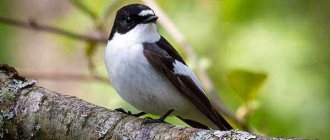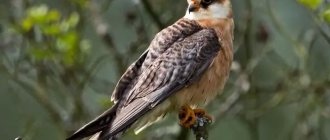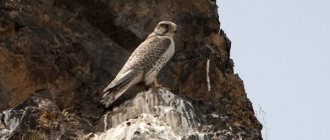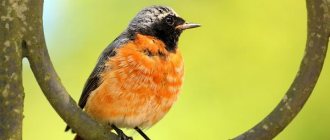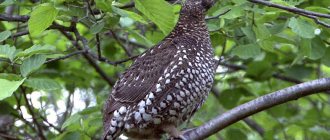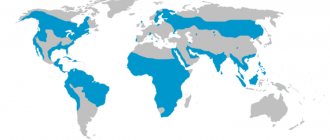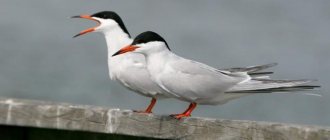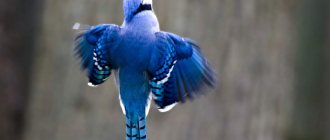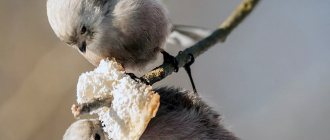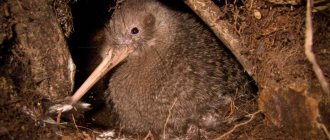Features and habitat
The bird of paradise is not a fantastic creature, but an ordinary earthly creature. In Latin, such birds are called Paradisaeidae and are the closest relatives of the usual magpies and crows, belonging to the order Passeriformes.
The appearance of these creatures is beautiful and inimitable. The birds of paradise in the photo have a powerful, most often long, beak. The shape of the tail, depending on the species, is different: it can be stepped and long or straight and short.
Pictures of birds of paradise eloquently show that the color of their feathers can be very diverse. Many species have bright and rich shades, feathers can be red and gold, as well as blue or dark blue, there are dark varieties with shiny, metal-like shades.
Males are usually more elegant than their female counterparts and use their jewelry in complex and interesting current games. In total, there are 45 species of such birds on the planet, each of which has individual distinctive features.
Of these, 38 species live in New Guinea or nearby islands. They can also be found in the east and northern parts of Australia. The skins of these wonderful birds were first brought to Europe on Magellan's ship in the 16th century, and they immediately created a real sensation.
The attire of the birds was so impressive that for several centuries there were legends about the amazing birds about their healing abilities and miraculous properties. Even ridiculous rumors were spread that such birds do not have legs, they feed on “heavenly dew” and live right in the air.
Fictions and fairy tales were the reason why people sought to acquire these beautiful creatures, who were credited with fantastic beauty and miraculous powers. And traders, who only sought to make profits, removed the legs of bird skins. Since then, for several centuries there has been virtually no reliable information about these birds.
The ridiculous rumors were dispelled only in the 19th century by the Frenchman Rene Lesson, who traveled as a ship's doctor to the territory of New Guinea, where he had the opportunity to observe birds of paradise with legs, cheerfully jumping from branch to branch.
The indescribable beauty of the skins played a cruel joke on the birds. They were killed in the thousands to make decorations for ladies' hats and other wardrobe items. Today, such beautiful trinkets are worth millions of dollars.
A little history
Birds of paradise became known to people back in 1522, thanks to their wonderful skins. They made a splash in the fashion world of that time. The skins were brought to Europe by a team of sailors returning from Magellan. Those skins were gutted and had no limbs. People began to make up stories that the strange birds had no legs and levitated all their lives, laying eggs (supposedly sitting on the back of a flying male) and feeding in the air. Not paying attention to the words of one of the expedition members, who claimed that there were legs after all. The people could no longer be stopped and beautiful legends became firmly entrenched in society.
In 1824, the legend was destroyed, the French doctor René Lasson, while traveling to the islands of New Guinea, met a living specimen , deftly jumping on two legs.
Trophy skins imported by sailors became wildly successful. Feathers were used as elements of clothing and decoration. People went crazy from the unprecedented beauty; every girl wanted to have a similar feather in her lady’s hat. During the short period of German colonization, more than fifty thousand bird of paradise skins were exported from the islands.
Care and lifestyle
Birds of paradise, as a rule, live in forests, some of them in the thickets of highlands, abundantly covered with trees and vegetation. In modern society, hunting birds of paradise is strictly prohibited, and catching them is possible only for scientific purposes. Only Papuans are allowed to kill them.
Decorating with feathers is their centuries-old cultural tradition, and the needs of the local people do not require too many birds. Tourists come with pleasure to admire the colorful national holidays that are local customs and the wonderful outfits of bird feather dancers.
The natives have mastered the skill of catching birds of paradise by building a hut in the treetops where the birds live. The exotic appeal of birds of paradise has led to many people breeding them at home. And with skillful maintenance of birds, this can become a good business. These are flirtatious, intelligent and lively creatures, quite capable of understanding both the beauty of their own appearance and the danger to which they are exposed as a result.
The most amazing and beautiful birds can be observed if you visit Birds of Paradise Garden in St. Petersburg. The birds kept there are given complete freedom. They have the ability to fly and move around the entire room, without fear of humans and willingly demonstrating themselves to the audience against the backdrop of beautiful, natural tropical vegetation and an artificial pond. They delight the ears with their songs and amaze with the sight of colorful mating games.
Today, it is quite easy to buy birds of paradise, and popular message boards on the Internet offer this in the fastest and most inexpensive way. Such sections are regularly updated by commercial and private breeders of domestic and exotic birds.
What do birds of paradise eat?
Like living legends, birds of paradise must enjoy flower nectar. And in fact, they do so, but only a few consider nectar only as an occasional addition to the diet. Most eat insects and fruits, and sometimes even frogs and lizards. They are helped in this by their long, curved beak, with which they search for invertebrates hidden in the cracks of the tree. In turn, predatory specimens are capable of chiseling dead trunks and branches with their powerful beaks, like woodpeckers. Among the birds of paradise, not all violate the principles of equality so sharply.
There are several species of birds of paradise in which the males are indistinguishable from the females. Most often, they live in permanent relationships and take care of the chicks together. Therefore, they have no need to show off, they only look towards their relatives who can have fun dancing. From eggs they hatch as hybrids - a rather rare phenomenon among animals living in the wild. Scientists still cannot determine how many species of birds of paradise exist. In various sources you can find information about 35, 42 and even 44 species.
Living in inaccessible mountains helped birds of paradise survive in difficult times. But most birds of paradise share habitat with humans. Three species of birds of paradise are at risk of extinction. But even in their case, the situation is not tragic. Thanks to the British Royal Society for the Protection of Birds and the American Audubon Society, hunting birds of paradise for export purposes was banned already in 1908. Previously, in London itself they sold 40 thousand stuffed animals a year. In 1917, England banned the import of bird of paradise feathers. Five years later, New Guinea banned hunting. Only Indonesia remained, but it also banned trade in this product 16 years ago.
Nature has also protected birds of paradise from extinction. Despite the fact that some males became prey for hunters, the rest could fertilize many females. Of course, birds with the brightest plumage had the greatest value for people. Male birds of paradise gain full color and shape in their feathers after the 5th year of life. But they mature sexually by the age of two years. Therefore, when the environment lacked the most decorative older males, the females accepted less showy, young individuals. And so the birds of paradise survived more than 500 years of contact with Western civilization.
If you liked an adventure into the world of birds of paradise, an interesting site offers an equally exciting journey into the world of other paradise creatures - butterflies and moths.
Nutrition
Birds of paradise, common in areas with a favorable climate, have the opportunity to eat a varied diet. Having settled in the forests, they eat plant seeds as food, collect small fruits, and love to eat fruits.
They often do not disdain other types of prey, eating a variety of insects, hunting for frogs hiding in the roots of trees, finding small lizards in the grass, and are capable of eating mollusks.
Birds usually feed in the crowns; they can collect food on the trunks of trees, finding insect larvae in the bark, or at the foot directly from the ground, picking up fallen berries. These creatures are unpretentious in nutrition, and will always find something to profit from. And some species of birds of paradise are even able to obtain flower nectar, which they love to drink.
Feeding these birds at home is quite a responsible matter, because the breeder needs to take care of creating a diet rich in vitamins and corresponding to the nutrition of birds of paradise in natural conditions. They can be fed with feed, which is stocked by any responsible poultry farmer. These can be grains, fruits, vegetables and root vegetables.
Description
The body length of adult birds reaches 20 cm, and the tail length is 15 cm with a wingspan of 17-20 cm. The upper part of the head and neck is covered with golden-yellow feathers. The abdomen and back are turquoise, and the breast is black.
During the mating season, males develop long, thread-like, red feathers on the sides of their chest. The trunks of these feathers are very long, and their fan is almost devoid of grooves. The feathers on the wings have a bronze tint.
The head is small. The dewlap and cheeks are covered with emerald green feathers. The irises are bright yellow with black eyelids. The beak is strong and elongated, light gray in color. The legs are painted pink with a bronze tint. The feet have four toes, three of which face forward and one back.
- Nettle
- Elk
- 100 facts about bears
- Jungle animals
- Saber-toothed tiger
- 50 facts about kangaroos
The lifespan of the imperial bird of paradise in the wild is about 12 years.
Reproduction and lifespan
During the mating season, male birds of paradise dance to attract partners, trying to demonstrate the richness of their plumage. Moreover, they can gather in groups, sometimes several dozen. The dance of the birds of paradise is an extremely beautiful sight.
The males of the legless Salvadoran species, possessing golden feathers, raise them, hiding their heads under their wings and at the same time resembling a huge and beautiful chrysanthemum flower. More often, mating dances take place in trees, but there are also whole colorful performances on forest edges, for which the birds prepare for a long time, trampling the place of theatrical action, clearing grass and leaves, and then covering the “stage” with fresh leaves plucked from the trees for the comfort of the future dance. .
Many species of birds of paradise are monogamous, they form stable pairs, and the male helps his partner build a nest for the chicks. However, in most varieties, partners do not form pairs and meet only during mating. And mothers themselves lay and hatch eggs (usually there are no more than two), then feeding their children without the participation of a second parent.
Nests, which resemble deep plates in appearance, are made and located on tree branches. Some species, which include, for example, the royal bird of paradise, prefer to nest by choosing a suitable hollow. The lifespan of birds of paradise can be up to 20 years.
General characteristics of appearance
Birds have a powerful beak , which from breed to breed reaches very impressive sizes. Almost all birds have a wide, straight tail. Some species boast a long and stepped version.
The color of members of the family varies widely, from very dark, with a metallic sheen, to bright and colorful individuals. Among the birds of paradise you can find:
- Yellow, with a hint of lemon;
- Red, in combination with black;
- From bright blues to deep onyx and much more.
Males have brighter colors than females. Male individuals can boast of having massive and bright feathers on the head and sides. “Decorating feathers” are displayed during games and mating dances. This is due to widespread sexual dimorphism in some bird species. This difference was also captured in Timothy Lehman's photo report.
